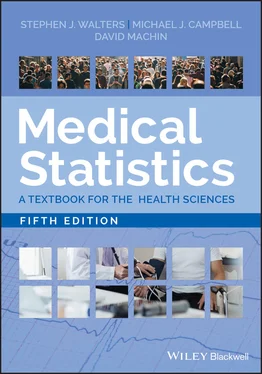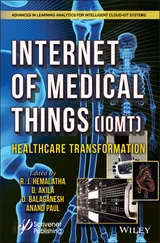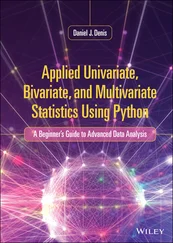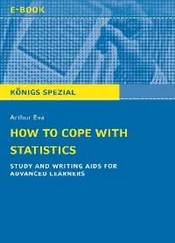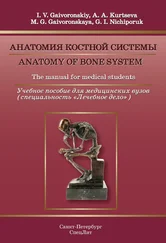Issues with NNT – Always Consider all the Risks
Consider a test and a control treatment with success rates (proportion of patients on the treatment with a positive outcome) of P Testand P Controlrespectively. Table 3.5shows several scenarios that have the same RD, P Test− P Control, of 0.1 and NNT of 10 but different risks (of a positive outcome) and relative risks (RR Test/Control) and odds ratios (OR Test/Control). When interpreting a NNT it is important to consider the baseline risk or event rate in the control group. For example, in scenario 1, the new test treatment still only has a success rate of 10% (compared to an admittedly poor success rate of 0.1% in the control group). That is, only one out of 10 treated patients are likely to benefit on the new treatment but this gives the same NNT as scenario 7 where the success rate on the control treatment is a much higher 80% (that is, 8 out of 10 treated patients are likely to benefit on the control treatment compared to 9 out of 10 on the new treatment).
Table 3.5 Seven scenarios with the same NNT but different risks.
| Scenario |
P Test |
P Control |
P Test− P Control |
NNT |
RR Test/Control |
OR Test/Control |
| 1 |
0.1001 |
0.0001 |
0.1 |
10 |
1001 |
1112 |
| 2 |
0.101 |
0.001 |
0.1 |
10 |
101 |
112 |
| 3 |
0.11 |
0.01 |
0.1 |
10 |
11 |
12 |
| 4 |
0.15 |
0.05 |
0.1 |
10 |
3 |
3 |
| 5 |
0.2 |
0.1 |
0.1 |
10 |
2 |
2 |
| 6 |
0.6 |
0.5 |
0.1 |
10 |
1.2 |
2 |
| 7 |
0.9 |
0.8 |
0.1 |
10 |
1.1 |
2 |
Without stating the direction of the effect, the alternative treatment, the treatment period, and the follow‐up period, information in terms of NNTs is uninterpretable. Thus when quoting an NNT one should always give the basic information about which treatments are compared, the treatment period, the follow‐up period, and the direction of the effect.
Example – Importance of Considering both Absolute Risk and Relative Risk
Women of reproductive age not using the combined oral contraceptive pill have a risk of deep vein thrombosis (DVT) of about 2 per 10 000 women per year (Stegeman et al. 2013). Use of combined oral contraceptives increases the risk of DVT compared with non‐use by a relative risk of 4 to 8 per 10 000 women per year, which would seem a large extra risk. However, the absolute increase in risk is 8/10 000 – 2/10 000 = 6/10 000 = 0.0006, or an additional 6 women with DVTs in 10 000 years of exposure. This increased risk is very small and hence may be considered worth taking, when balanced against other factors such as cost or convenience. Also, it is worth mentioning that a pregnant woman has a risk of a DVT of about 11 per 10 000 per year (Kourlaba et al. 2016); so the risk of DVT if you are pregnant is greater than the risk of a DVT when using the contraceptive pill, of 8 per 10 000 per year. Thus when one reads in the newspapers about a new risk to health that has been discovered, often only the relative risk is quoted, but one should ask about the baseline risk or incidence of the outcome (given you are not exposed to the risk factor) and the ARD, which may be negligible. If you are at very low risk, then you will remain at very low risk even when exposed to a hazard, unless the relative risk for the hazard is enormous!
Summarising Binary Data – Odds and Odds Ratios
A further method of summarising the results is to use the odds of an event rather than the probability. The odds of an event are defined as the ratio of the probability of occurrence of the event to the probability of non‐occurrence, that is , p /(1− p ).
Using the notation of Table 3.3we can see that the odds of a positive outcome for the test group relative to the odds of a positive outcome for control group, the odds ratio (OR), is:

The odds ratio (OR) from Table 3.3is

What does an odds ratio of less than 1 mean? There is a negative association between exposure and outcome (people in the exposed group less likely to experience outcome of interest). What does an odds ratio of more than 1 mean? There is a positive association between the exposure and outcome (people in the exposed group more likely to experience the outcome of interest).
Example – Summarising Results from a Clinical Trial– Corn Plasters: Odds Ratio
From Table 3.4, the odds of the corn resolving by three‐months in the plaster group is 0.337/(1 − 0.337) = 0.508; whilst the odds of resolution in the scalpel group is 0.213/(1 − 0.213) = 0.270. Thus, the odds ratio for the corn resolving by three months in the plaster compared to the scalpel treated group is 0.508/0.270 = 1.88. You can also calculate the odds ratio by using the four cell counts in the 2 × 2 contingency table of Table 3.3. The odds ratio for the corn resolving in the plaster group compared to the scalpel group is OR = (32 × 74)/(20 × 63) = 1.88.
The OR = 1.88 and RR = 1.58 with these trial data are clearly different. However, when the probability of an event happening is rare, the odds and probabilities are close, because when a is much smaller than c then the risk a/(a + c) is approximately a/c . Further if b is much smaller than d then b/(b + d) is approximately b/d , then RR = ( a / c )/( b / d ). Thus, the OR approximates the RR when the successes are rare, say with a maximum incidence less than 10% of either p Testor p ControlSometimes the odds ratio is referred to as ‘the approximate relative risk’. The approximation is demonstrated in Table 3.6.
Table 3.6 Comparison of RR and OR for different baseline rates.
| p Test |
p Control |
RR |
OR |
RR and OR |
| 0.05 |
0.1 |
0.5 |
0.47 |
Close |
| 0.1 |
0.2 |
0.5 |
0.44 |
Close |
| 0.2 |
0.4 |
0.5 |
0.38 |
Not close |
| 0.4 |
0.2 |
2 |
2.66 |
Not close |
| 0.2 |
0.1 |
2 |
2.25 |
Close |
| 0.1 |
0.05 |
2 |
2.11 |
Close |
Why Should One Use the Odds Ratio?
The calculation for an OR may seem rather perverse, given that we can calculate the relative risk directly from the 2 × 2 table and the odds ratio is only an approximation of this. However, the OR appears quite often in the literature, so it is important to be aware of it. It has certain mathematical properties which render it attractive as an alternative to the RR as a summary measure. The OR features in logistic regression (see Chapter 10) and as a summary measure for case‐control studies (see Section 14.8). An example where the authors quote an odds ratio is given below.
One point about the OR that can be seen immediately from the formula is that the odds ratio for failure as opposed to the odds ratio for success in Table 3.3is given by OR = bc / ad . Thus, the OR for failure is just the inverse of the OR for success.
Читать дальше
